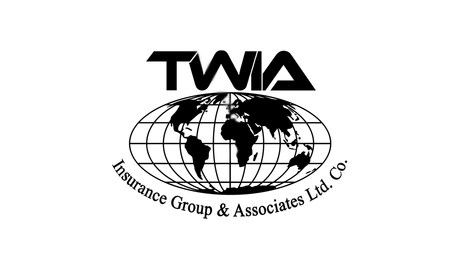TWIA Commercial Property & Casualty
12 types of technology that can make jobsites safer
Lena Kenny is safety manager at New York City-based contractor JT Magen & Co. Opinions are the author’s own.
Construction Safety Week is an annual opportunity for people, companies and even competitors to work together and celebrate the incredibly hard work done by people in our industry who make safety the foundation of everything they do and demonstrate their continued commitment to building a stronger, safer industry.
Innovating construction safety involves implementing new ideas, technologies, processes and practices to reduce risks, prevent accidents and promote a culture of safety. At JT Magen & Co., we already implement many steps to innovate our construction safety, including everything from risk assessment and management to training and education.
We also embrace technologies such as wearable devices, drones and artificial intelligence-powered analytics to improve safety monitoring, hazard detection and incident prevention.
Innovations such as these have the potential to significantly improve workplace safety in the construction industry by providing better risk assessment, enhanced communication and real-time monitoring of workers and environments. By leveraging these emerging technologies, construction companies like JT Magen can create safer working environments, reduce accidents and injuries and improve overall productivity and efficiency in the industry.
Here are some examples of technologies we strive to develop and improve, and how these technologies can contribute:
Wearables: Devices such as smart helmets, vests and wristbands equipped with sensors can monitor vital signs, detect hazardous substances and provide real-time alerts in case of accidents or dangerous conditions. These devices can also track workers’ movements to prevent collisions and ensure they stay within safe zones.
Virtual reality/augmented reality: VR and AR platforms can be used for immersive safety training simulations, allowing workers to practice handling hazardous situations in a controlled environment. AR can also provide on-site guidance and visual overlays of safety protocols, equipment instructions and hazard warnings, improving situational awareness.
Drones: Unmanned aerial vehicles equipped with cameras and sensors can conduct surveys of construction sites to identify potential hazards, monitor progress and inspect hard-to-reach areas without risking worker safety. They can also be used for inventory management and security monitoring.
Artificial intelligence: AI-powered algorithms can analyze vast amounts of data from sensors, cameras and other sources to predict safety incidents such as falls or equipment malfunctions before they occur. AI can also optimize resource allocation, schedule maintenance tasks and automate safety inspections to minimize risks.
BIM: This type of software enables architects, engineers and construction teams to create digital models of buildings and infrastructure projects. These models can simulate construction processes, identify safety hazards and plan logistics more efficiently, reducing the likelihood of accidents during the construction phase. While already in use, the expansion of this technology can only improve our safety profile.
Robotics: Robotic systems can perform repetitive or dangerous tasks such as heavy lifting, demolition and welding with precision and consistency, minimizing the need for human intervention in hazardous environments. Collaborative robots, or cobots, can work alongside human workers, enhancing productivity and safety.
3D printing/additive manufacturing: 3D printing allows for the fabrication of complex structures and components with high precision. It can be used to create custom safety equipment, tools and building materials tailored to specific project requirements, enhancing worker safety and efficiency.
Predictive analytics: By applying predictive analytics to historical safety data, construction companies can identify trends, patterns and risk factors associated with workplace accidents and near misses. This information can be used to develop proactive safety measures and targeted interventions to prevent future incidents.
Autonomous vehicles and equipment: AVs and robotic construction equipment can perform tasks such as material transport, excavation and site preparation with minimal human intervention. These technologies reduce the risk of accidents caused by human error and improve overall construction site safety.
Remote monitoring and telepresence: These innovations enable supervisors and safety managers to oversee construction activities and provide real-time guidance to workers from a centralized location. This capability enhances communication, facilitates quick decision-making and ensures adherence to safety protocols.
Environmental monitoring and control: These advanced systems can measure air quality, noise levels, temperature, humidity and other factors that affect worker health and safety. By continuously monitoring and controlling these environmental parameters, construction companies can create safer and more comfortable work environments.
Exoskeletons: Wearable robotic devices augment human strength and endurance can help reduce the risk of musculoskeletal injuries by providing support and assistance to workers when performing physically demanding tasks such as lifting heavy objects or working in awkward positions.
Construction Safety Week reminds us that at all times, safety is priority No. 1 for our industry, and that it’s our responsibility to follow, expand and enhance safety procedures every day.
Stay Ahead in Construction: Essential Insights and Protection for Your Projects
The construction industry is the backbone of progress, constantly evolving and presenting new opportunities and challenges. As an investor, realtor, or lender in this vibrant sector, staying informed with the latest construction news is key to making smart decisions. Our blog, sourced from one of the top construction industry sites, is your gateway to staying ahead of the curve.
But what about protecting your investments and projects? Alongside these insights, we present our comprehensive Contractor Insurance Suite, designed to shield your construction projects from the unforeseen. From liability to property damage, our insurance solutions provide the security you need in an industry known for its unpredictability.
Whether you're breaking ground on a new project or managing ongoing developments, our insurance suite ensures that your financial interests are protected immediately. Discover how our tailored insurance products can be the cornerstone of your construction project's success.
Explore Contractor Insurance Solutions for Construction Success
This post was originally published on this site


